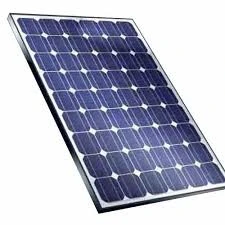solar panels on membrane roof
Solar Panels on Membrane Roofs A Sustainable Energy Solution
In recent years, the quest for sustainable energy solutions has led to an increased interest in solar energy. Solar panels, as a clean and renewable energy source, have become increasingly popular among homeowners and businesses alike. One innovative application of solar technology is the installation of solar panels on membrane roofs. This combination not only enhances energy efficiency but also maximizes the functionality of roofing systems.
Understanding Membrane Roofs
Membrane roofs are widely used in commercial buildings due to their lightweight, waterproof characteristics, and overall durability. Typically made from materials such as TPO (Thermoplastic Olefin), PVC (Polyvinyl Chloride), or EPDM (Ethylene Propylene Diene Monomer), membrane roofs are designed to withstand various weather conditions while providing a seamless surface that minimizes leakage. Their flat structure allows for easy installation and maintenance, making them an ideal candidate for solar panel deployment.
Benefits of Installing Solar Panels on Membrane Roofs
1. Energy Efficiency One of the most significant advantages of adding solar panels to membrane roofs is the potential for reduced energy costs. By harnessing solar energy, buildings can generate their own electricity, leading to lower utility bills. This reduction in reliance on traditional energy sources not only has financial benefits but also contributes to environmental sustainability.
2. Space Optimization In urban areas where space is limited, membrane roofs provide an excellent opportunity to utilize otherwise unused surfaces. Installing solar panels on these roofs maximizes the functionality of the building without consuming additional land. Utilizing the roof space for solar energy generation helps to mitigate urban heat islands and enhances the overall energy profile of buildings.
3. Durability and Longevity Membrane roofing systems are designed to be durable and can withstand various external stresses. The addition of solar panels can enhance the lifespan of the roof by protecting it from harsh weather conditions. Furthermore, modern solar panel materials also come with weather-resistant features, ensuring that the roof structure remains intact for decades.
solar panels on membrane roof

4. Sustainability and Green Certification Many businesses and homeowners are actively seeking to reduce their carbon footprint. Installing solar panels on membrane roofs aligns perfectly with the goals of sustainability. Additionally, buildings that utilize renewable energy sources may qualify for various green certifications, further enhancing their market appeal and competitive advantage.
5. Simplified Maintenance Maintenance of membrane roofs is relatively straightforward, and the presence of solar panels typically does not complicate this process. Qualified professionals can easily access the panels for cleaning and inspection without compromising the roof's integrity. This ease of maintenance ensures the long-term efficiency of both the roofing system and the solar energy generation.
Installation Considerations
While the advantages of installing solar panels on membrane roofs are clear, there are several factors to consider during the installation process. First, it's crucial to select appropriate mounting systems that do not puncture or damage the membrane material. Ballasted or mechanical attachment systems can be utilized, depending on the roof's structure and the local building codes.
Additionally, the weight and layout of the solar panels must be assessed to ensure that the roof can support the load without compromising its stability. Consulting with experienced professionals in both roofing and solar energy installation is essential to ensure a successful and efficient setup.
Conclusion
The integration of solar panels on membrane roofs presents a compelling solution for anyone looking to capitalize on renewable energy. This approach not only enhances energy efficiency and sustainability but also optimizes the use of available space. As the world continues to navigate the challenges of climate change and energy resource depletion, merging solar technology with innovative roofing solutions represents a proactive step towards a greener future. Investing in solar panels for membrane roofs is not merely an upgrade; it is a commitment to sustainability and energy independence that benefits both individuals and the planet. As technology advances and costs decrease, we can expect to see a surge in this practice, illuminating the path to a more sustainable built environment.
-
Understanding the Advantages of Solar String Inverters for Your Energy SystemNewsApr.29,2025
-
Choosing the Right PV Inverter: A Comprehensive GuideNewsApr.29,2025
-
The Future of Solar Power: Exploring Bifacial Solar PanelsNewsApr.29,2025
-
The Complete Guide to Solar Panels: Efficiency, Cost, And InstallationNewsApr.29,2025
-
The Best Options for Efficiency and Cost-EffectivenessNewsApr.29,2025
-
Harnessing the Power of Off-Grid Solar Inverters for Energy IndependenceNewsApr.29,2025







